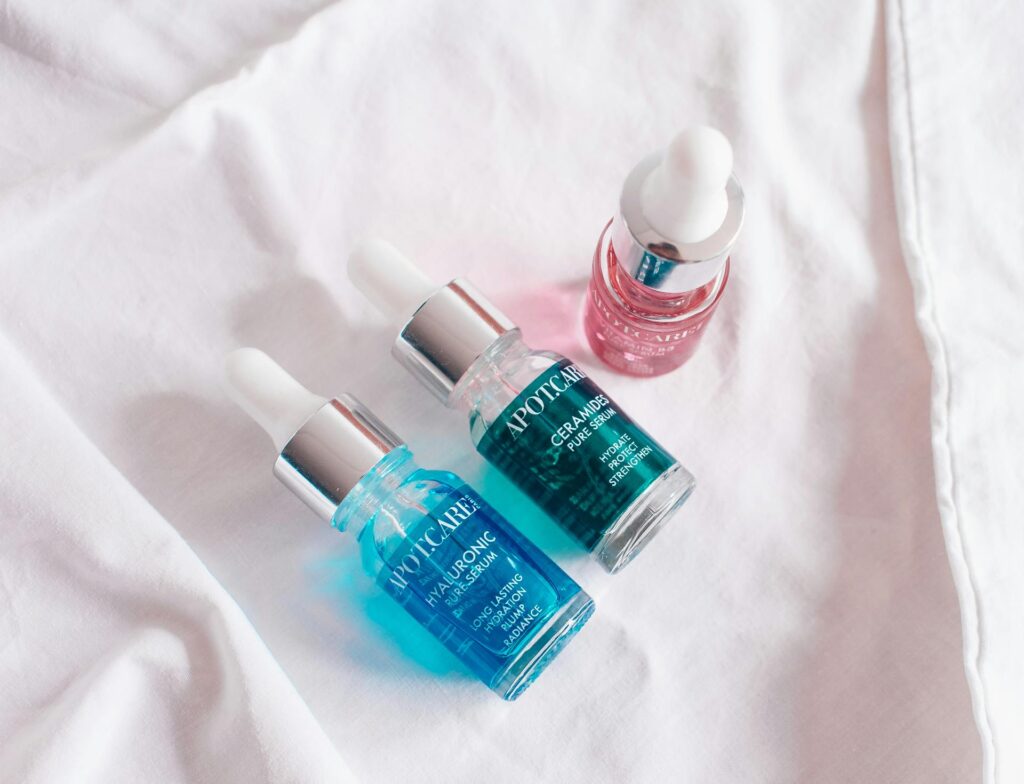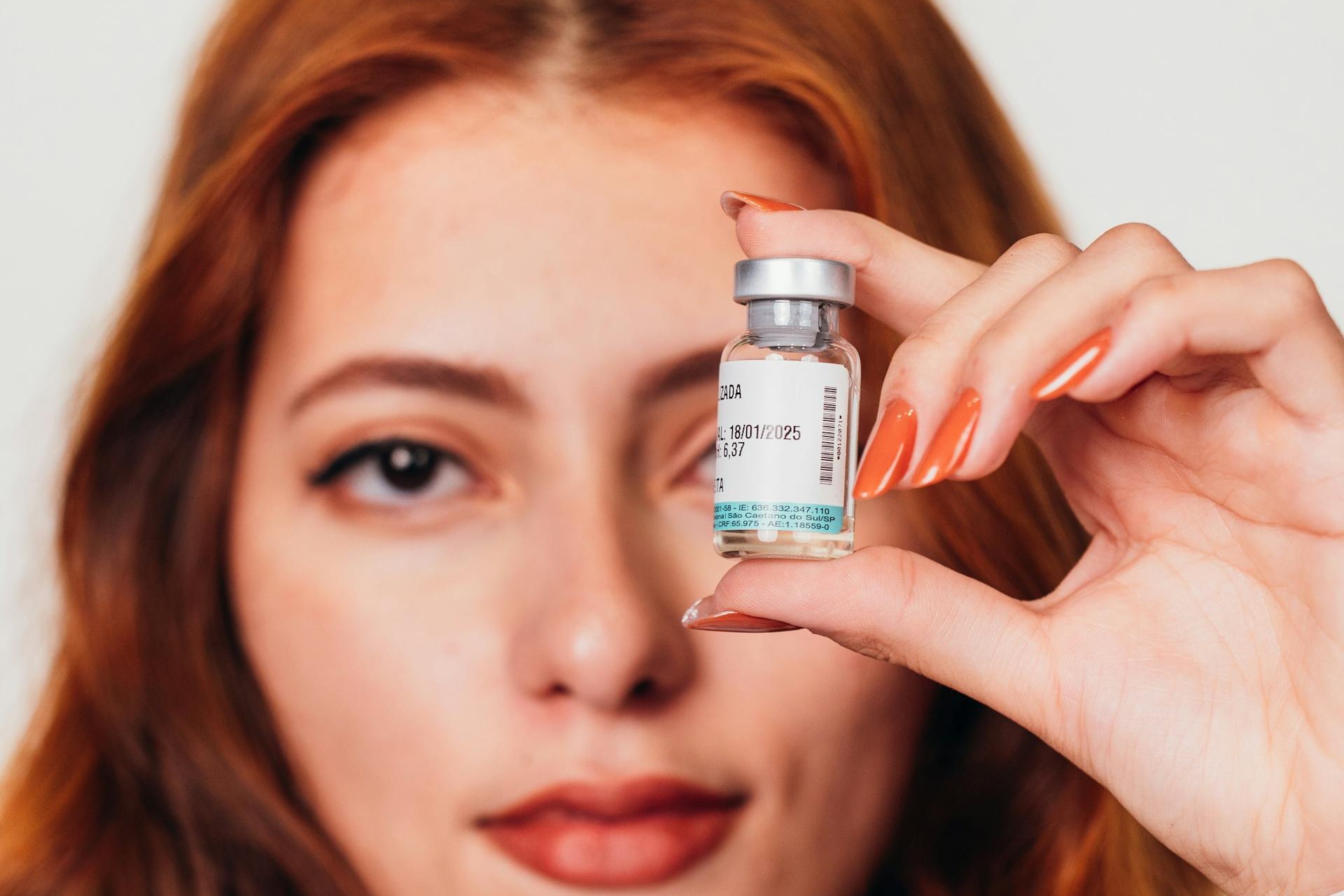
Dermal fillers have significantly changed the landscape of cosmetic enhancement in the UK, providing innovative options for facial rejuvenation and restoring volume.
This article delves into the evolution of dermal fillers, tracing their journey from the early days of collagen injections to the current widespread use of hyaluronic acid and other advancements.
You will learn about the various types of fillers available, their safety profiles, and the mechanisms by which they enhance natural beauty.
Whether you are contemplating a procedure or are simply curious about the topic, this guide offers valuable insights to meet your needs.
The Evolution of Dermal Fillers in the UK

The evolution of dermal fillers in the UK has been quite an impressive journey, showcasing significant advancements in aesthetics and cosmetic procedures that prioritise patient satisfaction.
Throughout the years, the beauty industry has introduced a range of injectable treatments specifically designed to tackle the effects of ageing and enhance skin rejuvenation, all while emphasising safety and effectiveness.
As innovations continue to influence treatment protocols, it is essential for both medical professionals and patients to understand these changes and their implications.
What are Dermal Fillers?
Dermal fillers are injectable treatments widely used in aesthetic medicine to restore volume, enhance contours, and improve skin texture. This makes them a popular choice for individuals looking to achieve cosmetic enhancements in facial aesthetics.
These soft tissue augmentation agents primarily consist of substances such as hyaluronic acid and collagen, both of which are biocompatible materials designed to integrate smoothly with the skin’s structure.
Plus hyaluronic acid, there are other types of fillers, including calcium hydroxylapatite and poly-L-lactic acid. Each of these options offers unique benefits and varying durations of effectiveness.
Patients often turn to dermal fillers to address signs of ageing, such as wrinkles and sagging skin, or to enhance specific facial features like the lips, cheeks, and jawline.
It is essential to provide proper patient education, as this helps individuals understand potential side effects, the importance of selecting qualified practitioners, and the expected outcomes of their treatment.
By engaging in discussions about personal goals and concerns with a medical professional, patients can make informed decisions that align with their aesthetic aspirations.
What are the Different Types of Dermal Fillers?
There are several types of dermal fillers available, each formulated with unique materials to achieve specific aesthetic goals. These include collagen, hyaluronic acid, and bioplastics. These fillers act as volumising agents that can help restore facial volume, reduce wrinkles, and enhance facial contours, catering to the diverse needs of individuals seeking cosmetic enhancements.
Understanding the different formulations can assist individuals in making informed decisions about their cosmetic treatments. For instance, hyaluronic acid fillers are quite popular due to their ability to hydrate the skin and deliver natural-looking results, making them a preferred choice for smoothing fine lines.
Collagen-based fillers, on the other hand, are designed to stimulate the body’s natural collagen production, which can lead to longer-lasting effects.
Bioplastics are often favoured for deeper volume restoration, although they may carry a higher risk of complications. It is essential for prospective patients to weigh the benefits and potential side effects of each type, taking into account their unique skin type and age demographics to achieve the desired outcome.
The History of Dermal Fillers

The history of dermal fillers presents a captivating narrative that illustrates the progression of aesthetic trends and cosmetic surgery over the years.
In the beginning, collagen injections emerged as the preferred choice for volumising agents and wrinkle reduction. These treatments offered both practitioners and patients an innovative approach to addressing signs of ageing while pursuing facial symmetry and a youthful appearance.
The First Dermal Fillers: Collagen Injections
Collagen injections were among the first dermal fillers introduced to the market, effectively transforming anti-ageing treatments and providing patients with a solution for volume loss and wrinkle reduction. These early injectable treatments not only showcased impressive longevity in their results but also paved the way for the development of more advanced filler types in the years that followed.
The introduction of collagen injections allowed patients to feel more confident in their appearance, as they offered a relatively straightforward method for enhancing facial aesthetics. While the advantages of these treatments were significant, they did come with limitations, such as the risk of allergic reactions and the requirement for frequent touch-ups.
These challenges underscored the need for improved formulations, which ultimately led to the emergence of hyaluronic acid fillers and other synthetic alternatives. Consequently, the aesthetic landscape has evolved, providing individuals with a broader range of options tailored to their unique needs and preferences.
The Rise of Hyaluronic Acid Fillers
Hyaluronic acid fillers have become exceedingly popular in the beauty industry, emerging as the preferred choice for a variety of cosmetic procedures due to their impressive ability to provide hydration and achieve natural-looking results.
These innovative filler formulations are designed to integrate seamlessly with the skin’s structure, enhancing facial volume and contour while offering a minimally invasive option for rejuvenation.
What truly distinguishes these fillers is their exceptional capacity to attract and retain moisture, which not only plumps the skin but also significantly improves its overall texture and elasticity. This hydration aspect is especially appealing, as it effectively addresses common concerns such as dryness and loss of firmness that often accompany the ageing process.
Recent advancements in injection techniques, such as the use of micro-cannulas, have greatly enhanced patient comfort by reducing bruising and swelling. These developments have facilitated more precise application and improved overall results, ultimately leading to higher satisfaction rates among individuals seeking a youthful appearance with minimal downtime.
Other Types of Dermal Fillers That Emerged
Plus collagen and hyaluronic acid fillers, the market has seen the emergence of various dermal fillers, including bioplastics, which offer distinct benefits for soft tissue augmentation. While these alternative fillers come with their own advantages, it is essential for practitioners to consider potential adverse reactions and prioritise patient safety when determining the most suitable treatment for individuals.
For example, poly-L-lactic acid fillers are known for stimulating collagen production, resulting in a gradual improvement in volume and texture over time. These fillers are often preferred for their longevity; however, the results may not be immediately noticeable, which necessitates careful management of patient expectations.
Calcium hydroxylapatite fillers, being thicker, provide structural support and are effective for addressing deeper lines and folds. Nevertheless, they also carry risks, such as uneven texture or the migration of the filler.
A thorough understanding of the unique properties of each filler type is vital for both practitioners and patients. This knowledge ensures informed decisions that prioritise safety and align with desired outcomes.
How Do Dermal Fillers Work?
Dermal fillers are designed to restore lost volume and enhance facial contours by injecting biocompatible substances such as hyaluronic acid and collagen into targeted areas of the skin. These materials play a significant role in improving skin structure, promoting hydration, and supporting skin elasticity, all of which contribute to a more youthful appearance.
The effectiveness of these fillers lies in their ability to mimic the skin’s natural components, particularly hyaluronic acid, which is essential for maintaining moisture levels. When injected, these substances attract and retain water within the dermal layer, resulting in immediate plumpness and hydration.
Collagen is also crucial for skin firmness and strength, and fillers help stimulate the body’s own collagen production over time.
This dynamic interaction not only enhances volume but also improves overall skin health. As a result, individuals can achieve a more vibrant and youthful complexion, which is often a primary goal in cosmetic treatments.
The Role of Collagen and Hyaluronic Acid in the Skin
Collagen and hyaluronic acid are crucial for maintaining skin elasticity and hydration, both of which are essential in the fight against the ageing process. As individuals age, the natural production of these substances declines, resulting in volume loss and changes in skin texture. This decrease often prompts many to consider dermal fillers as an effective solution for rejuvenation.
These two components not only enhance the skin’s firmness and moisture but also promote cell regeneration and repair, helping to maintain a youthful glow. Collagen, a structural protein, forms a supportive framework that gives the skin its shape. In contrast, hyaluronic acid functions like a sponge, attracting moisture and keeping the skin plump.
As the levels of these vital substances diminish over time, the skin may begin to show fine lines, wrinkles, and sagging. Fortunately, dermal fillers, which commonly contain hyaluronic acid, can effectively restore lost volume and smooth out wrinkles.
This non-invasive approach offers a way to counteract the visible signs of ageing and rejuvenate one’s appearance, ultimately boosting confidence and comfort in one’s own skin.
What Can Dermal Fillers Be Used For?

Dermal fillers serve multiple aesthetic purposes, such as restoring facial volume, reducing wrinkles, and enhancing lip fullness.
Their versatility makes them an ideal option for various cosmetic enhancements, enabling patients to achieve their desired facial appearance with minimal downtime and effective results.
Facial Volume Loss
Facial volume loss is a prevalent concern that many people experience as they age. Dermal fillers present an effective means of restoring youthful contours and enhancing soft tissue volume. When administered strategically, these fillers can yield natural-looking results, helping individuals regain confidence in their appearance.
This loss of volume often arises from a decline in collagen and elastin production, which can lead to sagging skin and hollows in prominent areas such as the cheeks, temples, and under-eye region. Additionally, factors like sun exposure, lifestyle choices, and environmental stressors can further amplify the visibility of volume loss in these areas.
Dermal fillers can be skillfully injected into these common treatment areas to replenish lost volume and smooth out lines and wrinkles. By selecting the appropriate type of filler for specific facial concerns, individuals can achieve rejuvenated facial features and a more vibrant, youthful appearance, all without the need for invasive surgical procedures.
Wrinkles and Fine Lines
Wrinkles and fine lines are common indicators of ageing that can significantly affect an individual’s facial appearance. Dermal fillers have become a well-regarded option for reducing these signs of ageing. By addressing these imperfections, patients can achieve smoother skin and a more youthful complexion through personalised treatment plans.
These injectable solutions are designed to target specific areas, such as the nasolabial folds, marionette lines, and tear troughs. The techniques used aim to minimise discomfort while maximising the desired aesthetic effects. Practitioners often utilise microcannulas or fine needles to administer the fillers with precision, ensuring a natural look.
This approach effectively restores volume loss, enhances facial contours, and creates a plumper, more rejuvenated appearance.
As a result, individuals not only experience immediate improvements but also enjoy a significant boost in their confidence, happily embracing their enhanced looks.
Lip Augmentation
Lip augmentation has emerged as a notable aesthetic trend, with numerous individuals seeking fuller, more defined lips through the application of lip fillers. These dermal fillers offer a level of customisation that can produce natural-looking results, thereby enhancing the overall balance and symmetry of the facial appearance.
The increasing interest in lip enhancement can be attributed to several factors, including the influence of social media and a heightened awareness of aesthetic procedures.
Various injection techniques, such as the Russian lip technique, can provide subtle volume while preserving a soft, natural appearance. Practitioners prioritise understanding each person’s unique facial structure and desired outcomes, ensuring that the results complement their natural features.
It is essential to balance patient expectations with professional expertise to achieve aesthetically pleasing results that not only enhance the lips but also harmonise with the overall facial composition.
Are Dermal Fillers Safe?
Safety is a significant concern when it comes to dermal fillers, and understanding their potential side effects is essential for ensuring patient safety during cosmetic procedures. Clinical studies and cosmetic regulations have shaped the development and application of dermal fillers, offering valuable insights into their efficacy and associated risk factors.
It is important for individuals considering these treatments to carefully weigh the pros and cons, especially when comparing dermal fillers to alternatives such as Botox or surgical procedures.
Selecting a qualified practitioner can greatly reduce the chances of adverse outcomes, as their expertise is crucial in minimising the risks linked to injections. Patients should also be aware of possible side effects, which may include mild swelling and bruising, as well as more serious complications.
By conducting thorough research and engaging in careful consultations, individuals can make informed decisions that enhance their safety and satisfaction with the results.
Potential Risks and Side Effects
While dermal fillers are generally considered safe, it is important to acknowledge the potential risks and side effects, such as bruising, swelling, and the possibility of filler migration, before proceeding with treatment. Educating patients plays a crucial role in preparing them for the procedure and ensuring they have realistic expectations regarding the results and recovery process.
Some individuals might experience allergic reactions or infections at the injection site, which underscores the importance of a thorough consultation. Practitioners have a vital responsibility to inform patients about these risks and to assess their suitability for treatment.
They should provide clear information about the types of fillers available, their expected longevity, and the necessary aftercare. Engaging in open and transparent dialogue enables individuals to make informed decisions, boosting their confidence in both the procedure and the practitioner’s expertise.
Ultimately, comprehensive education can help alleviate anxiety and contribute to a smoother overall experience.
How to Choose the Right Dermal Filler for You

Selecting the appropriate dermal filler requires careful consideration of several factors, including individual aesthetic goals, skin type, and patient expectations. Collaborating with experienced practitioners is essential, as they can customise treatments to meet personal needs, ultimately maximising satisfaction with the outcomes.
Consulting with medical professionals plays a crucial role in this process, as they can offer insights that are specifically tailored to an individual’s unique skin health and requirements. It is important to conduct a thorough assessment of the skin’s condition; aspects such as elasticity, hydration, and any underlying conditions should be evaluated.
Being knowledgeable about the various types of fillers available—such as hyaluronic acid and collagen-stimulating products—enables individuals to make well-informed decisions. This understanding enables them to engage in meaningful discussions about the best options for achieving their desired appearance while minimising potential risks, thereby enhancing both the overall experience and the results.
Factors to Consider
When selecting a dermal filler, several important factors come into play, including patient demographics, dermal filler costs, and the specific areas that require attention. An aesthetic consultation with a qualified practitioner can effectively guide individuals through these considerations, ensuring that the chosen filler aligns with their unique needs.
The type of filler—whether it is hyaluronic acid, calcium hydroxylapatite, or another option—plays a vital role in achieving the desired results. It is essential to evaluate the patient’s individual facial structure and skin condition to determine which filler will provide the most natural and harmonious appearance.
Discussing potential side effects and recovery timelines during the consultation can offer reassurance and better prepare individuals for their experience. By thoughtfully addressing these factors, patients can make informed decisions that not only enhance their appearance but also boost their overall confidence, ultimately leading to satisfying aesthetic outcomes.
How to Prepare for a Dermal Filler Procedure
Preparing for a dermal filler procedure involves following several pre-treatment guidelines that can enhance both safety and effectiveness. It is essential to stay hydrated and avoid certain medications to minimise side effects and ensure optimal results in skin rejuvenation.
Patients should start by drinking plenty of water in the days leading up to their appointment. Proper hydration can help plump the skin and improve the overall outcome of the treatment.
Additionally, it is advisable to refrain from taking blood thinners, such as aspirin, and certain supplements like vitamin E or fish oil at least a week prior to the procedure, as these can increase the risk of bruising.
Individuals should also consider consulting with their healthcare provider regarding any current medications or health conditions that may affect the procedure. Finally, ensuring a relaxed mindset and getting adequate rest the night before can significantly contribute to a smoother experience during the treatment.
What to Expect During and After a Dermal Filler Procedure
Understanding what to expect during and after a dermal filler procedure can greatly reduce anxiety and improve patient satisfaction. Typically, the procedure involves a quick injection, followed by a discussion on aftercare instructions to ensure the best possible outcomes while minimising potential side effects.
Initially, a healthcare professional will evaluate the areas that need enhancement and may apply a topical anaesthetic for added comfort. The filler is then injected into specific locations using fine needles or cannulas, depending on the desired results.
After the injections, patients may notice mild swelling or redness at the injection sites, but these effects are usually short-lived. Following the procedure, it is essential to adhere to aftercare recommendations, such as avoiding strenuous exercise and direct sun exposure, to promote healing.
Staying well-hydrated and attending follow-up appointments will also enhance the longevity of the results, allowing individuals to fully appreciate their improved appearance.
How Long Do Dermal Fillers Last?

The duration of dermal fillers varies significantly based on the type of filler administered, the area being treated, and individual factors. Typically, most results last between six months and two years. It is essential to understand the longevity of these treatments and the necessity for maintenance to set realistic expectations for patients regarding cosmetic enhancements.
Different types of fillers have unique compositions, which directly affect how long they can effectively provide volume and enhance facial contours. For example, hyaluronic acid fillers are often metabolised by the body more quickly than other types, leading to the need for more frequent touch-ups.
The specific area being treated also plays a crucial role; for instance, the lips may exhibit changes sooner than the cheeks, which experience less movement.
Individual body responses, including metabolism rates and skin types, can further influence the durability of results. This highlights the importance of personalised treatment plans. Regular follow-up appointments are vital, as they provide opportunities for adjustments and maintenance treatments, helping to sustain the desired appearance over time.
Frequently Asked Questions: Evolution of Dermal Fillers in the UK
What is the difference between collagen and hyaluronic acid dermal fillers?
Collagen and hyaluronic acid dermal fillers are both used to add volume and structure to the skin, but they differ in their composition. Collagen fillers are made from animal-derived collagen, while hyaluronic acid fillers are made from a synthetic form of a substance naturally found in the body.
How has the use of dermal fillers evolved in the UK?
In the past, collagen was the most commonly used dermal filler in the UK. However, with advancements in technology and research, hyaluronic acid fillers have become more popular due to their longer-lasting results and natural-looking effects.
What are the benefits of using hyaluronic acid dermal fillers?
Hyaluronic acid dermal fillers have several benefits, including their ability to attract and retain moisture, resulting in smoother and more hydrated skin. They also have a lower risk of allergic reactions compared to collagen fillers and can be easily dissolved if needed.
Are there any risks or side effects associated with dermal fillers?
As with any cosmetic procedure, there are potential risks and side effects associated with dermal fillers. These can include bruising, swelling, and allergic reactions. It is important to consult with a qualified and experienced practitioner to minimise these risks.
How long do the results of dermal fillers last?
The duration of results varies depending on the type of dermal filler used and the individual’s metabolism. Generally, collagen fillers last 3-4 months, while hyaluronic acid fillers can last 6-18 months. Touch-up treatments may be needed to maintain results.
Is there a difference between dermal fillers used for different parts of the face?
Yes, dermal fillers are customised for specific areas of the face. Thicker, more robust fillers are typically used for areas such as the cheeks and chin, while thinner fillers are used for more delicate areas like the lips. This ensures natural-looking results and avoids overfilling.






